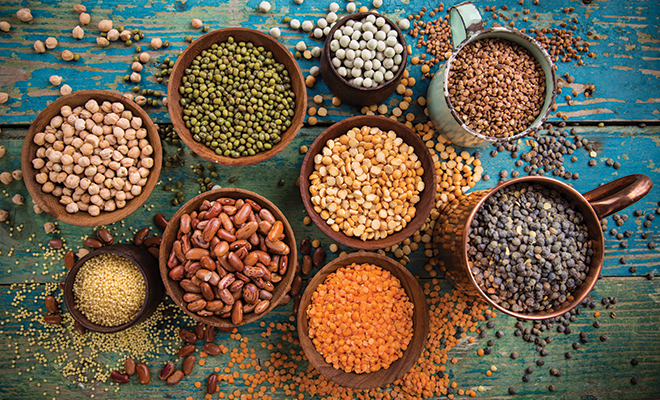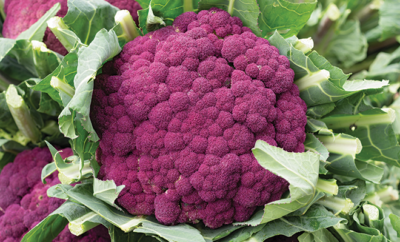
Take Your Pulse with Proteins!
Many families opt for “meatless meals” at least once a week. This may be for health reasons, using proteins that are lower in fat than animal protein.
For people on a budget, meatless options are often more economical. In fact, older members of my family sometimes spoke about a staple meal of the Great Depression, bean soup.
Consider for a moment a world in which food was so scarce that the foods you relied on, such as sugar, coffee, butter, cheese and meat, were rationed to prevent people from hoarding food. Out of necessity, people used everything they had.
Making bean soup was a great way to make sure nothing was wasted. A big pot of bean soup could last for days, with any leftover meat or vegetables going into the soup pot. My relatives who lived through those days were evenly divided on the merits of bean soup. Half of them swore they’d never eat beans because it reminded them of those tough times. They reminded me of Scarlett O’Hara’s vow in Gone with the Wind, “I’ll never be hungry again!” The other half still loved bean soup and said they wouldn’t mind having it every day.
In fact, nearly every culture has traditional dishes featuring protein-rich beans. These dishes were once considered “peasant food,” as the dishes were associated with farm folk. From Europe, there’s Tuscan bean soup, made with white beans and veggies; French cassoulet, a long-simmered bean and meat stew; Feijoada, a Portuguese bean stew with cheap cuts of meat that is considered the national dish of Brazil. Here in America, red beans and rice with sausage are a staple of the South, especially New Orleans.
While beans have been a staple food globally, they have another thing in common; they are all considered part of a food group called “pulses.” Why pulses? It’s not derived from the Latin associated with the pulse of a heartbeat, pulsare, to beat or throb, but from another Latin word, puls, meaning thick porridge or mush. This food group is considered so important that the United Nations designated 2016 as the International Year of Pulses.
Exactly what are pulses, and why do they continue to have a global impact?
Pulses are defined as legumes that are used as a dried product, such as lentils, beans, peas and chickpeas. Any legumes that are harvested and used as a “green” dish are considered a vegetable, not a pulse. Those that are harvested strictly for extracting oil, such as soybeans, are also not included in the pulse family.
One of the benefits of pulses is that they are considered superfoods. In addition to providing protein, pulses are a source of vitamins such as folate, a B1 vitamin, and minerals such as zinc, potassium and magnesium. Pulses are iron rich, with more iron per serving than steak. This food group also provides both soluble and insoluble fiber. This fiber component is crucial in helping prevent disease such as diabetes, heart disease and obesity.
Pulses are low on the glycemic index because they are broken down slowly as you digest them; this slow digestion also increases the feeling that you’re full, helping to manage weight loss. In addition to being gluten-free, pulses are also free of cholesterol, and they’re low in fat. Topping off their superfood status is the fact that they provide more antioxidants than the juice of pomegranates or blueberries.
Another reason the United Nations made pulses a priority is that they have many benefits for farmers, especially those in developing countries. Growing pulses helps support the soil, because legumes are nitrogen-fixing crops. This means they’re able to use nitrogen in the air, pulling the nitrogen into the soil. This helps reduce the use of fertilizers that increase air pollution. Pulses also require much less water compared to other crops, and they use only a fraction of the water needed for raising livestock.
Here’s a food group that promotes good health and good environmental practices. What’s not to love? Well, moderation is key. Start small; large servings of pulses may cause your digestive system to produce more gas. And if you must watch protein levels, as do folks with gout, renal disease or lupus, you should consult your doctor before changing your diet.
If you’re inspired to experiment with pulses in your diet, canned foods are an easy way to start. Canned goods have higher sodium content, though, so look for dried beans and lentils if you want to control sodium. Follow the package directions to cook the amount you need. Beans and lentils can be added to soups, stews, rice dishes and salads. Mashed or blended pulses also add a zip of protein to homemade hummus dips.
Once you start, it may be difficult to stop taking your pulses! ■
Sources: eatsmarter.com, etymonline.com and scmp.com.







